Der Effekt von Tageslänge und Temperatur auf potentiell invasive Forstschädlinge (Lepidoptera: Lymantriinae & Geometridae) in Nordeuropa.
The effect of day length and temperature on potential invasive forest pests (Lepidoptera: Lymantriidae & Geometridae) in Northern Europe
Projektmitarbeiterin: Dr. Phil. Julia Fält-Nardmann
In zusammenarbeit mit: The Biodiversity Unit of the University of Turku
Die Doktorarbeit auf UTUPUB
Publikationen:
Fält-Nardmann J.J.J., Klemola T., Roth M., Ruohomäki K. & Saikkonen K. (2016). Northern geometrid forest pests (Lepidoptera: Geometridae) hatch at lower temperatures than their southern conspecifics: Implications of climate change. — European Journal of Entomology, 113: 337–343. doi:10.14411/eje.2016.043
Fält-Nardmann J.J.J., Klemola T., Ruohomäki K., Niemelä P., Roth M. & Saikkonen K. (2018a). Local adaptations and phenotypic plasticity may render gypsy moth and nun moth future pests in northern European boreal forests. — Canadian Journal of Forest Research, 48: 265–276. doi: 10.1139/cjfr-2016-0481
Fält-Nardmann J.J.J., Ruohomäki K., Tikkanen O-P. & Neuvonen S. (2018b). Cold hardiness of Lymantria monacha and L. dispar (Lepidoptera: Erebiidae) eggs to extreme winter temperatures: implications for predicting climate change impacts. — Ecological Entomology, 43: 422–430. doi: 10.1111/een.12515
Fält-Nardmann J.J.J., Leinonen R., Pöyry J., Ruohomäki K., Saikkonen K., Tikkanen O-P., Otto L-F. & Neuvonen S. (2018c). The recent northward expansion of Lymantria monacha in relation to realised changes in temperatures of different seasons. — Forest Ecology and Management, 427: 96–105. doi: 10.1016/j.foreco.2018.05.053
Nähere informationen (Auf Englisch):
The topic of my PhD was the effect of photoperiod and temperature on five moth species classified as forest pests. These environmental factors were studied in the context of global climate change and species range shifts within Europe.
Among my research questions were:
- Are the life cycles of moths from Central European populations linked to and timed by northern climate and light conditions in the same way as the life cycles of moths from native northern populations of the same species?
- Can pest species, that have so far been limited by cold temperatures on the northern edge of their distribution ranges, effortlessly adapt their life cycles to northern light rhythms if only the temperatures rise to a suitable level?
- What is the distributional history of Lymantria monacha, the nun moth, in Finland? How long has it been present in the southern parts of the country, and when did the species start to spread northwards? Is the expansion of its range connected to climatic events?
- How cold-hardy are nun-moth and gypsy-moth (Lymantria dispar) eggs? Are there already adaptive differences in cold-hardiness between nun moths from Central European populations and recently established Finnish populations?
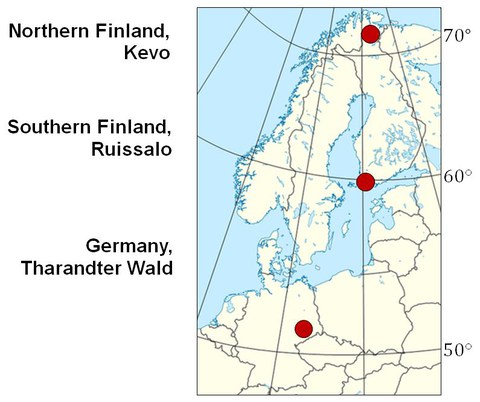
Untersuchungsgebiete
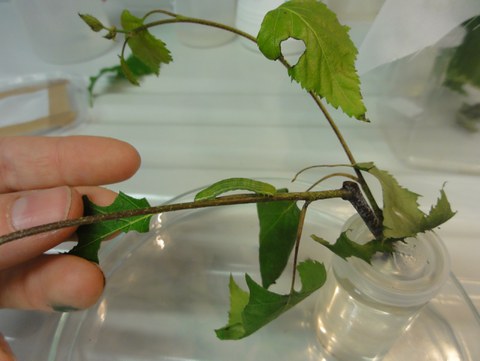
E. autumnata caterpillar in lab
Methods:
- Laboratory breeding of all life cycle stages of moths in constant climate chambers
- Outdoor breeding of moths in net-sleeves on live trees on three forest locations in Europe: Tharandter Wald in Germany, Ruissalo in South-Western Finland and Kevo in Northern Finland.
- Literature and database research on historical moth distribution and abundances.
- Freezing moth eggs to determining their supercooling ability
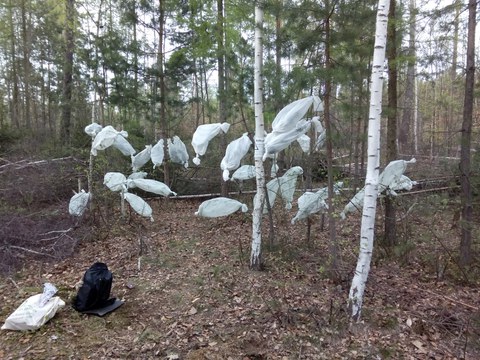
Net sleeves in Tharandter Wald
Moth species included in my study:
Lymantriinae: Lymantria dispar (Gypsy Moth, Schwammspinner); Lymantria monacha (Nun Moth, Nonne); Geometridae: Epirrita autumnata (Autumnal Moth, Birken Moorwald Herbstspanner); Erannis defoliaria (Mottled Umber, Großer Frostspanner); Operophtera brumata (Winter Moth, Kleiner Frostspanner)
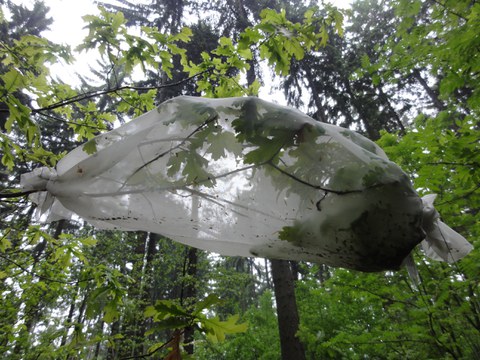
Net sleeve on oak
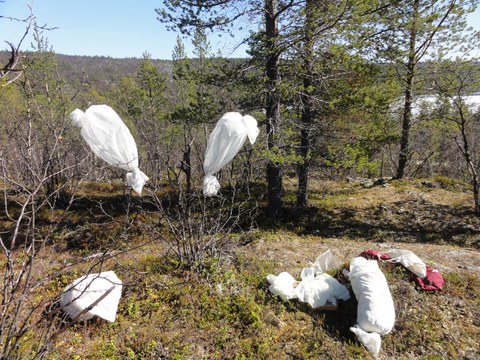
Net sleeves in Kevo, Lapland
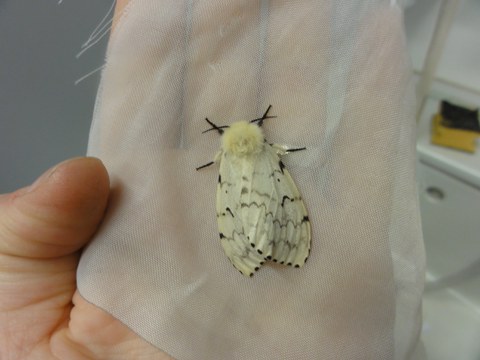
Nun moth female in Lab